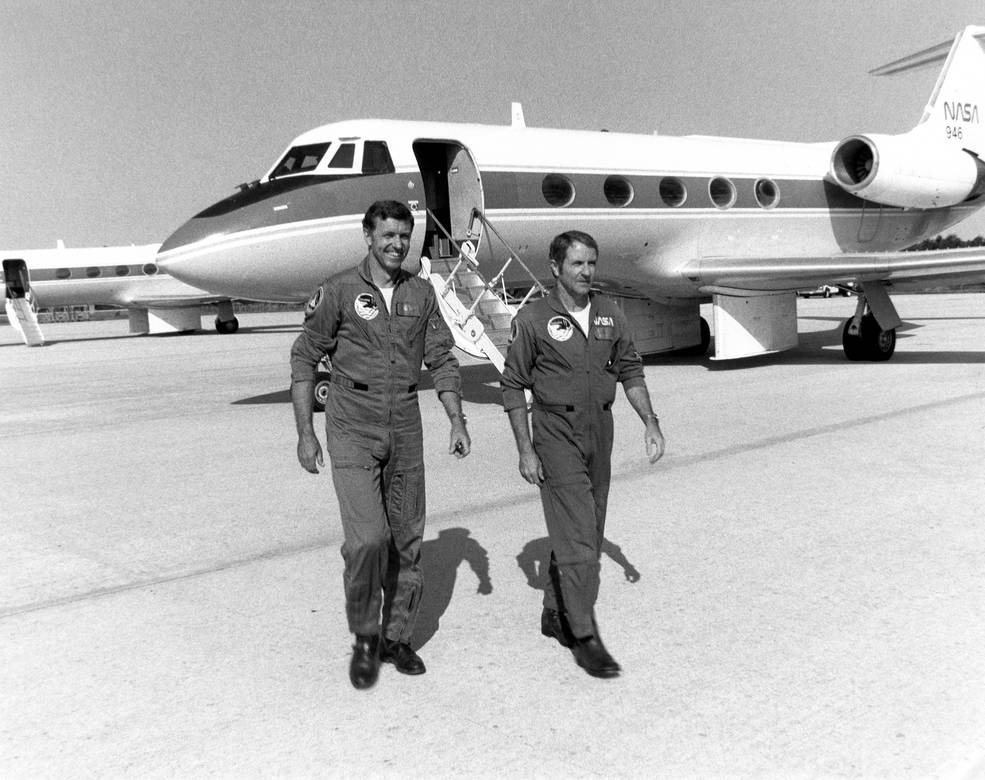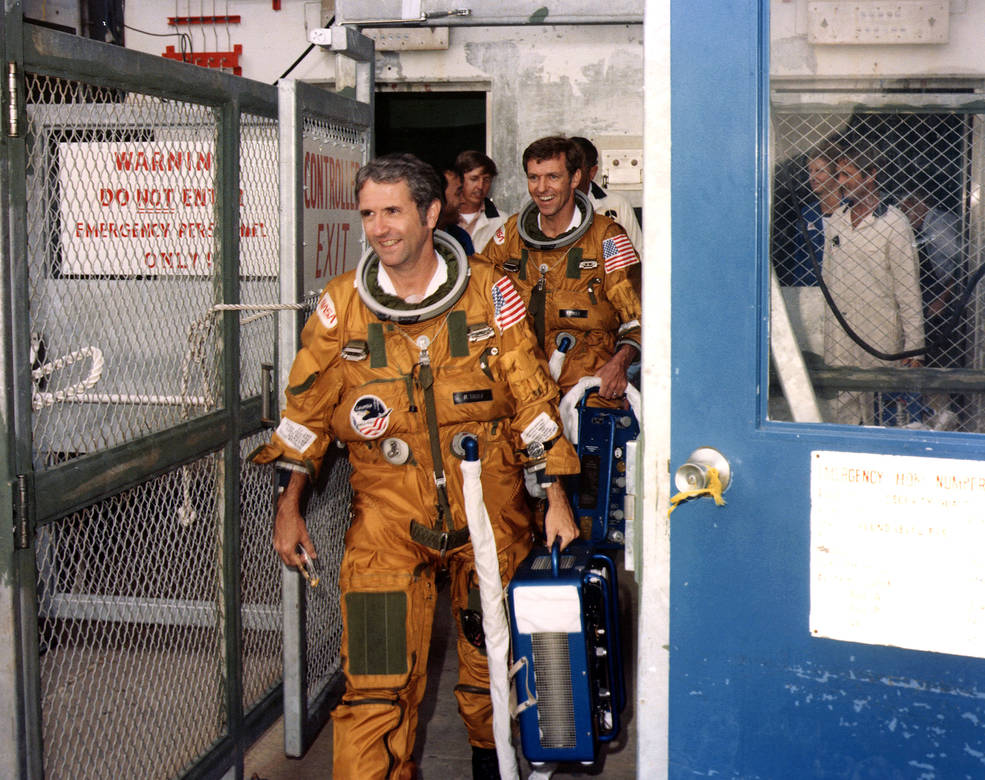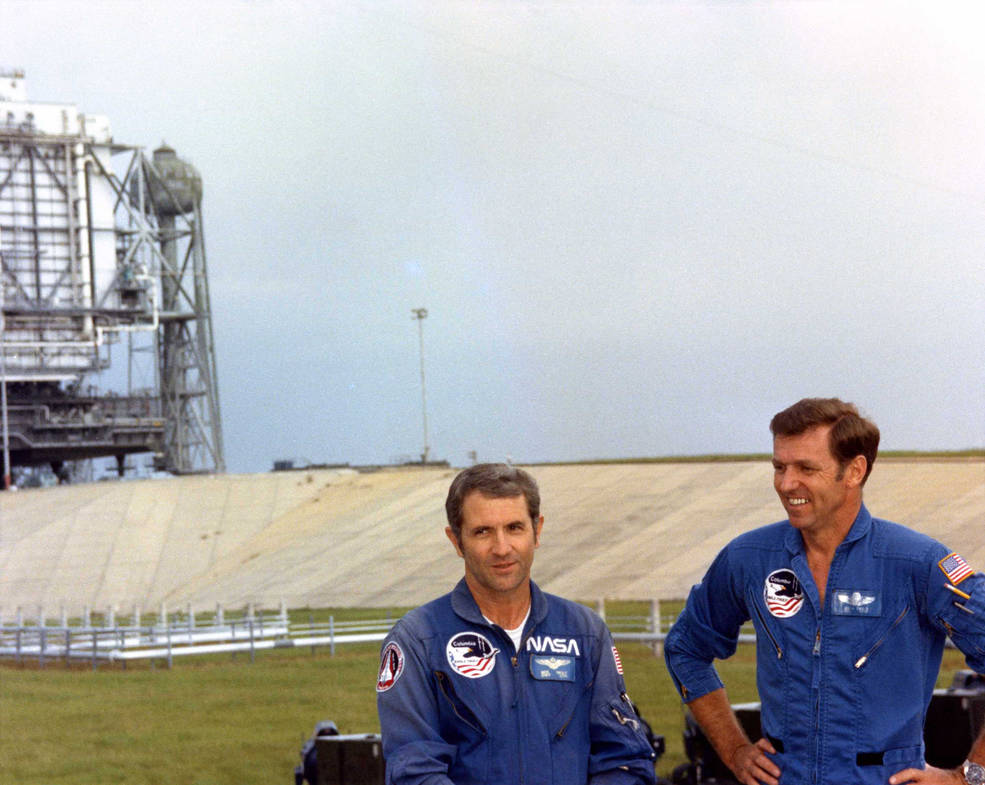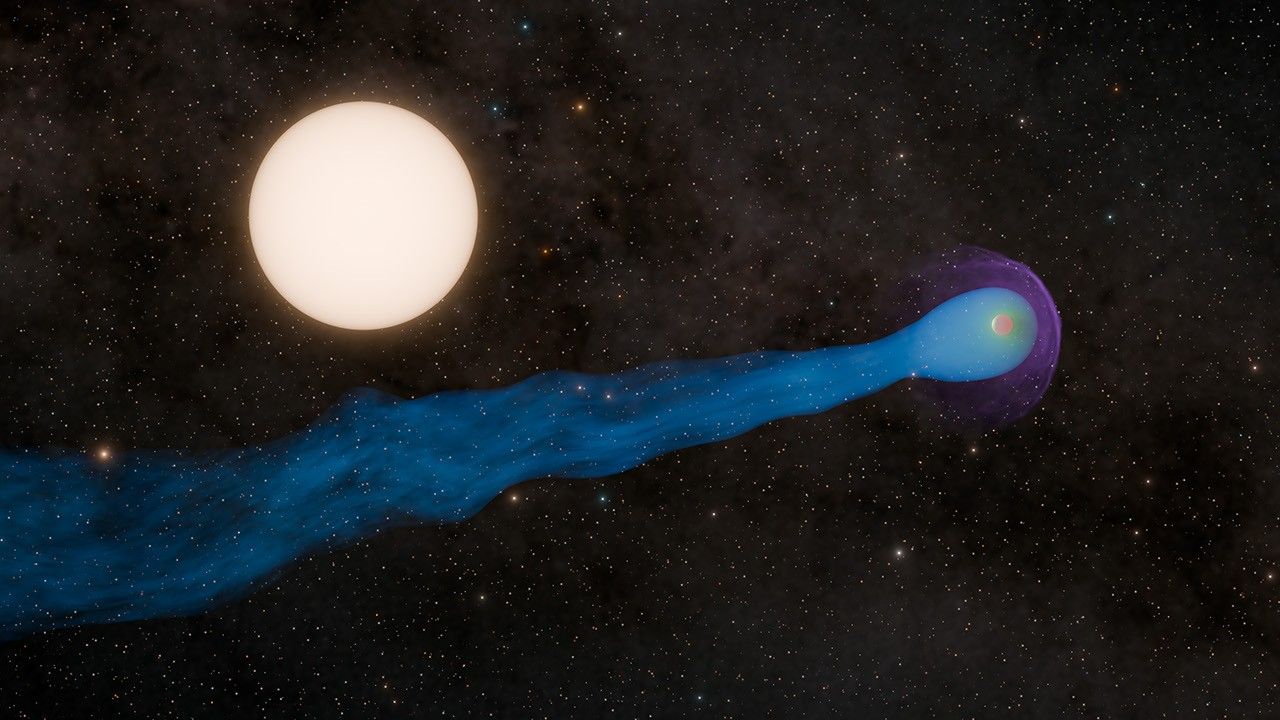Following the Aug. 31, 1981 rollout of space shuttle Columbia to Launch Pad 39A at NASA’s Kennedy Space Center (KSC) in Florida, the program targeted Oct. 9 as the launch date for STS-2, the second flight of the reusable spacecraft. The launch teams and astronauts Joe H. Engle and Richard H. Truly completed a countdown demonstration test and the shuttle’s external tank successfully passed a practice tanking test. However, a spill of corrosive oxidizer during fueling resulted in hundreds of heat shield tiles coming loose from the orbiter’s nose. The required repair work resulted in a delay of the launch to early November. Flight controllers in Mission Control at NASA’s Johnson Space Center in Houston completed the final long-duration simulation of the mission.


Left: STS-2 backup astronauts Henry W. “Hank” Hartsfield, left, and Thomas K. “TK”
Mattingly during emergency egress training at Launch Pad 39A at NASA’s Kennedy
Space Center (KSC) in Florida. Right: STS-2 astronauts Joe H. Engle, left, and
Richard H. Truly at KSC for the countdown demonstration test.
The day Columbia arrived at its launch pad, controllers in the Mission Control Center at NASA’s Johnson Space Center in Houston began the second and final long-duration simulation of the STS-2 mission. The three-day simulation rehearsed the first 56 hours of the flight. Following the arrival of Columbia at Launch Pad 39A, technicians at KSC completed the Pad Validation Test to ensure the shuttle’s configuration did not change during the rollout and to verify the connections between the pad, the vehicle, and the mobile launch platform. On Sept. 2, STS-2 backup astronauts Thomas K. “TK” Mattingly and Henry W. “Hank” Hartsfield participated in emergency egress training at Launch Pad 39A, receiving a demonstration of the slide wire escape system and driving the armored personnel carriers to be used to evacuate the crew in the event of a launch pad emergency. On Sept. 9, launch control teams in Firing Room 1 of KSC’s Launch Control Center carried out a “dry” countdown demonstration test, meaning the external tank was not filled with cryogenic propellants. Engle and Truly participated in the final few hours of the test as they would on launch day, including donning their pressure suits and climbing into Columbia’s cockpit. The test ended with a simulated main engine ignition. On Sept. 15, engineers loaded the shuttle’s external tank with super cold liquid hydrogen and liquid oxygen. No damage to the tank’s foam insulation occurred – an improvement from the aftermath of a similar test prior to the STS-1 mission.



Left: At NASA’s Kennedy Space Center in Florida, STS-2 astronauts Richard H. Truly, left, and Joe H. Engle suiting up for the countdown demonstration test. Middle: Truly, left, and Engle leaving the White Room at Launch Pad 39A after the conclusion of the countdown demonstration test. Right: Truly, left, and Engle talk to reporters at Launch Pad 39A following the countdown demonstration test.
During fueling of Columbia’s starboard forward reaction control system on Sept. 22, about three gallons of highly corrosive nitrogen tetroxide oxidizer spilled onto the outside of the vehicle’s nose. The oxidizer seeped between the tiles of the thermal protection system, essentially melting the glue that held them in place. Approximately 360 tiles either fell off on their own or needed to be removed to clean the area of any residual oxidizer. This process, as well as the reattachment of new tiles, resulted in the planned launch date to slip to Nov. 4.


Left: Columbia on Launch Pad 39A at NASA’s Kennedy Space Center in Florida. Right: Missing thermal protection system tiles resulting from a spill of nitrogen tetroxide during fueling operations of the forward reaction control system.
To be continued…
World events in September 1981:
September 4 – Beyoncé Knowles is born in Houston.
September 7 – “The People’s Court” debuts in syndication.
September 12 – “The Smurfs” animated cartoon series by Hanna-Barbera debuts on NBC.
September 14 – “Entertainment Tonight” premieres in syndication.
September 19 – Simon and Garfunkel reunite for a concert in New York’s Central Park.
September 21 – Belize (formerly British Honduras) gains independence from the United Kingdom.
September 25 – Sandra Day O’Connor is sworn in as the first female U.S. Supreme Court Justice.
September 26 – The Boeing 767 airliner makes its first flight in Everett, Washington.
September 27 – The French Train à Grande Vitesse (TGV) high-speed rail makes its first commercial run between Paris and Lyon, reaching a top speed of 156 miles per hour.



























